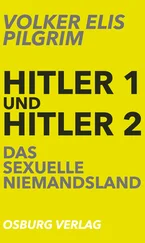Mezciems, today a suburb of Daugavpils (Dvinsk).
Here meaning SS-Gruppenführer and Generalleutnant der Polizei Paul Hennicke (31.1.1883–25.7.1967), Police President of Weimar, April 1938 – October 1942.
In Document 125 Kittel states that he met Hennicke in Rostov.
Kittel means the concentration camp at Cracow-Plaszow that was built in 1942 as a forced-labour camp and was turned into a death camp in 1944. Between 22,000 and 24,000 were interned there that summer. About 8,000 were murdered there. ‘Enzykloädie des Holocaust’, Vol. 2, p. 118f. Kittel was commandant of Cracow city on 8.8.1944.
SS-Brigadeführer and Generalmajor der Polizei (8.11.1944) Dr (Law) Walter Bierkamp (17.12.1901–16.4.1945), Sipo and SD Cdr, Cracow, June 1943 – February 1945.
Hans Frank (23.5.1903–16.10.1945) from 12.10.1939 General Governor of Poland. Housden, ‘Hans Frank’.
SS-Obergruppenführer Wilhelm Koppe (15.6.1896–2.7.1975) HSSPF (Higher SS Police Chief). For the wrangling over jurisdiction between Hans Frank and the HSSPF in Poland see Birn, ‘Die Höheren SS und Polizeiführer’, pp. 197–206.
SS-Obergruppenführer Friedrich Wilhelm Krüger (8.5.1894–10.5.1945), 4.10.1939–9.11.1943 HSSPF East.
For Rostov see note 305 305 Kittel apparently came to Dvinsk in his capacity as Oberst, Army Group North Führer-Reserve, and witnessed the murder of Jews there. Around 14,000 Jews were killed at Dvinsk in three phases in July, August and November 1941. In Document 119, Kittel himself reports having protested against the time and place of the shootings, but not against the deed. ‘Enzyklopädie des Holocaust, Vol. 1, p. 375.’ The 3,000 or so Jews living in Stalino were murdered between December 1941 and April 1942. After that, numerous Jews from outlying communities were brought to the city and murdered. Kittel was city commandant from 15.5.1942 to 20.9.1942. The 2,000 Jews remaining behind in Rostov were killed off between 11 and 12.8.1942, a date before Kittel’s appointment as commandant of Rostov on 20.9.1942. For the murder of Jews there see Angrick, ‘Besatzungspolitik’, pp. 320–2, 560–4. Later Kittel admitted having signed a death warrant at Rostov condemning five persons to be shot under martial law. ‘One death sentence which I carried out I still regret today because it was a Russian who had shot at two Rumanian soldiers stealing his chickens.’ SRGG 1089, 27.12.1944, TNA WO 208/4169.
below, for Lublin note 326 326 At Lublin-Maidanek death camp approximately 250,000 people were murdered by gassings and mass shootings between October 1941 and July 1944. The only large concentration camp in Czechoslovakia was at Theresienstadt (today Terezin), a ghetto-like complex 60 kilometres north-west of Prague. Between 24.11.1941 and 20.4.1945, 140,000 Jews were brought there from western and central Europe; 33,000 died of starvation and the poor hygiene conditions in the overcrowded camp; 88,000 went to the death camps in the east. ‘Enzyklopädie des Holocaust’, Vol. 3, pp. 1403–7.
below. Schaefer had already heard of mass killings, including those of women and children, at Maidanek. Kittel confirmed that it had been going on there for several years. SRGG 1089(c), 27.12.1944, TNA WO 208/4169.
Kittel meant the death camp at Auschwitz in Polish Upper Silesia.
For gifts to generals see note 394 394 Generalfeldmarschall Ritter von Leeb (5.9.1876–29.4.1956) received from Hitler in 1941 and 1943 two monetary gifts totalling RM888,000, which he used in August 1944 to acquire a woodland property of 214 hectares situated north of Passau. It is therefore incorrect to say that he turned down donations. Ueberschär/Vogel, ‘Dienen und Verdienen’, pp. 151–7. Leeb commanded Army Group North during the Russian campaign in 1941. Relieved by Hitler on 6.1.1942, he was not used again. Leeb was firmly opposed to the invasion of France, and was the only Army Group commander prepared to participate in a coup under Halder. When Halder was surprised by Hitler’s change of mind on 5.11.1939 and cancelled the coup preparations, Leeb lost interest and obeyed Hitler’s orders to prepare the attack. Subsequently he had no further contact with the opposition. Peter Hoffmann, ‘Staatsstreich’, pp. 161–5, 175, 179–83, 188f, also Leeb, ‘Tagebuchaufzeichnungen’, esp. pp. 50–4.
below.
See note 77 77 For a concise summary of the protests by Johannes Blaskowitz (10.7.1883–5.2.1948) against crimes by SS and police units in Poland, see Clark, ‘Blaskowitz’. Because of his criticisms, Blaskowitz never made Feldmarschall and received only second-class appointments. In a letter dated 6.2.1940 as C-in-C East he wrote, ‘The feelings of the Army towards the SS and Polizei vary between abhorrence and loathing, and every soldier feels disgusted and revolted by their crimes. In this connection one must not forget, however, that the Wehrmacht was also involved in the crimes in Poland’. Böhler, ‘Tragische Verstrickung’.
above.
There is no document proving the shooting of Commissars by Wahle’s Inf.Reg.267/94.Inf.Div. for November 1941. See Activity Report by Ic, 94.Inf.Div, 29.6.1941–12.12.1941. The only such incident within the Division’s jurisdiction is a liquidation on 2.9.1941, Ic morning report, Gruppe Schwedler (IV.Armeekorps) to 17.Armee, 2.9.1941, BA/MA RH20-17/278.
Prtemovsk near Bachmut, between Rostov and Kharkov.
Kittel apparently came to Dvinsk in his capacity as Oberst, Army Group North Führer-Reserve, and witnessed the murder of Jews there. Around 14,000 Jews were killed at Dvinsk in three phases in July, August and November 1941. In Document 119, Kittel himself reports having protested against the time and place of the shootings, but not against the deed. ‘Enzyklopädie des Holocaust, Vol. 1, p. 375.’ The 3,000 or so Jews living in Stalino were murdered between December 1941 and April 1942. After that, numerous Jews from outlying communities were brought to the city and murdered. Kittel was city commandant from 15.5.1942 to 20.9.1942. The 2,000 Jews remaining behind in Rostov were killed off between 11 and 12.8.1942, a date before Kittel’s appointment as commandant of Rostov on 20.9.1942. For the murder of Jews there see Angrick, ‘Besatzungspolitik’, pp. 320–2, 560–4. Later Kittel admitted having signed a death warrant at Rostov condemning five persons to be shot under martial law. ‘One death sentence which I carried out I still regret today because it was a Russian who had shot at two Rumanian soldiers stealing his chickens.’ SRGG 1089, 27.12.1944, TNA WO 208/4169.
Wildermuth was never a Feldkommandant. Possibly his service as a regimental commander in Serbia or as fortress commandant at Le Havre is meant, or he is being confused with Generalmajor Felbert.
Edwin Graf Rothkirch und Trach commanded 330.Inf.Div. from 5.1.1942. It was deployed the following month at Demidov, north of Smolensk, and also north of the Dnieper during the Soviet winter offensive.
In the Reich Commissariat Ukraine, on whose territory Rothkirch’s Oberfeldkommandantur 365 had its HQ at Lvov, total power was vested in the hands of the HSSPF Russia South, Hans-Adolf Prützmann. In the ‘Wagner – Heydrich Agreement’ of 28.4.1941, the Wehrmacht had given the SS a free hand to root out ‘anti-State and anti-Reich movements’. Ueberschär/Wette, ‘Überfall’, p. 249f. Nothing is known of a special local arrangement between Rothkirch as Oberfeldkommandant 365 or as CO, 330.Inf.Div., and the police.
Читать дальше

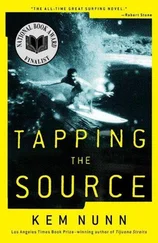
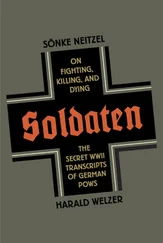

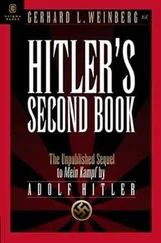
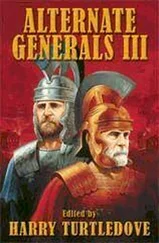
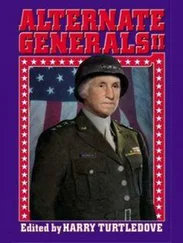

![Traudl Junge - Hitler's Last Secretary - A Firsthand Account of Life with Hitler [aka Until the Final Hour]](/books/416681/traudl-junge-hitler-s-last-secretary-a-firsthand-thumb.webp)

